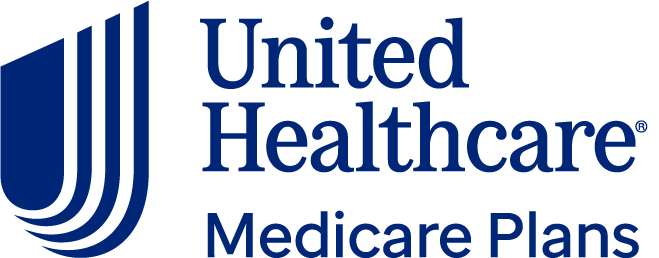Medicare Eligibility: Who Qualifies and When?
People age 65 and older and individuals with certain disabilities are eligible for Medicare.

Many, or all, of the products featured on this page are from our advertising partners who compensate us when you take certain actions on our website or click to take an action on their website. However, this does not influence our evaluations. Our opinions are our own. Here is a list of our partners and here's how we make money.
You become eligible for Medicare based on age when you turn 65. You can also qualify if you’re younger and have certain disabilities.
To get covered as early as possible, sign up for Medicare as soon as you become eligible. Doing so will also help you avoid late enrollment penalties.
Here’s what you should know about Medicare eligibility and how to calculate your eligibility date.
Shopping for Medicare plans? We have you covered.

4.1
CMS Star Rating
from UnitedHealthcare

4.19
CMS Star Rating
Who qualifies for Medicare?
There are two ways to qualify for Medicare:
Medicare eligibility age
Aged-based eligibility for Medicare starts when you turn 65 years old. Most Medicare beneficiaries — about 88% — qualify based on age.
Medicare eligibility based on disability
People who don’t meet the age requirements may qualify based on disability status.
Qualifying based on disability generally requires that at least one of the following is true, according to the Social Security Administration:
You’ve been entitled to Social Security Disability Insurance benefits, or SSDI, for at least 24 months.
You have end-stage renal disease.
You have amyotrophic lateral sclerosis, or ALS, also known as Lou Gehrig’s disease.
Medicare eligibility calculator
Medicare Part A eligibility
Medicare Part A covers inpatient care at hospitals and skilled nursing facilities, hospice care and home health services.
You become eligible for Medicare Part A when you turn 65 or by qualifying based on disability.
Most beneficiaries are eligible for Medicare Part A free of charge. Whether you qualify for premium-free Part A depends on your work history. In general, you get Medicare Part A for free if you or your spouse has worked and paid Medicare taxes for at least 10 years. (People with disabilities may have different requirements in certain circumstances.)
Eligibility to buy Medicare Part A
If you don’t qualify for Medicare Part A without premiums, you may still be able to buy Part A coverage. The Medicare Part A premium costs up to $518 per month in 2025 ($565 in 2026).
To be eligible to purchase Medicare Part A, you’ll need to be 65 or older and enrolled in Medicare Part B, too. (People with premium-free Medicare Part A aren’t required to enroll in Part B — but it’s usually a good idea to do so.)
Medicare Part B eligibility
Medicare Part B covers preventive services and medically necessary outpatient health care.
Your eligibility for Medicare Part B depends on how you qualify for Medicare Part A.
When you become eligible for premium-free Medicare Part A, you become eligible for Medicare Part B.
If you don’t qualify for premium-free Medicare Part A, you’re eligible for Medicare Part B if all of the following are true:
You’re 65 years old or older.
You’re a U.S. resident.
You’re either a U.S. citizen or a permanent resident who has resided in the U.S. continuously for five years before applying for Medicare.
Medicare Part C eligibility
Medicare Part C, or Medicare Advantage, is a bundled alternative to Medicare Part A and Part B and is sold by private insurance companies.
You’re eligible to join a Medicare Advantage plan if you qualify for Medicare Part A and Part B and you’re either a U.S. citizen or you’re lawfully present in the U.S..
Medicare Advantage plans’ availability varies by location. To join a plan, you’ll need to live in its service area. You can search medicare.gov/plan-compare or check insurance companies’ websites to find plans available in your area.
Medicare Part D eligibility
Medicare Part D covers outpatient prescription drugs. You can get Medicare prescription drug coverage by purchasing either a stand-alone Part D plan to complement Original Medicare (Part A and Part B) or a Medicare Advantage plan with drug coverage.
You must be a U.S. citizen or lawfully present in the U.S. to be eligible for either kind of Medicare prescription drug coverage.
Stand-alone Medicare Part D eligibility
If you have Medicare Part A and/or Part B, you can buy a stand-alone Medicare Part D plan from a private insurance company for prescription drug coverage.
Medicare Part D plans’ availability varies by location, so you’ll need to find one that offers coverage where you live. You can search medicare.gov/plan-compare or check insurance companies’ websites to find plans available in your area.
Medicare Part D eligibility with Medicare Advantage
Most Medicare Advantage (Part C) plans include prescription drug coverage, so you don’t need to buy a stand-alone Medicare Part D plan. In fact, if you sign up for a stand-alone Part D plan, you’ll be disenrolled from your Medicare Advantage plan unless it’s one of these (less common) plan types:
Private fee-for-service, or PFFS.
Medical savings account, or MSA.
Certain employer-sponsored Medicare plans.
Medigap eligibility
Medicare Supplement Insurance, or Medigap, is private insurance that covers certain out-of-pocket costs associated with Original Medicare (Medicare Part A and Part B). You need to have both Medicare Part A and Part B to be eligible for a Medigap policy.
Medigap policies work only with Original Medicare. You can’t use a Medigap policy with a Medicare Advantage plan. It’s illegal for anyone to sell you a Medigap policy when you have a Medicare Advantage plan, unless you’re switching back to Original Medicare.
Shopping for Medicare plans? We have you covered.

4.1
CMS Star Rating
from UnitedHealthcare

4.19
CMS Star Rating






